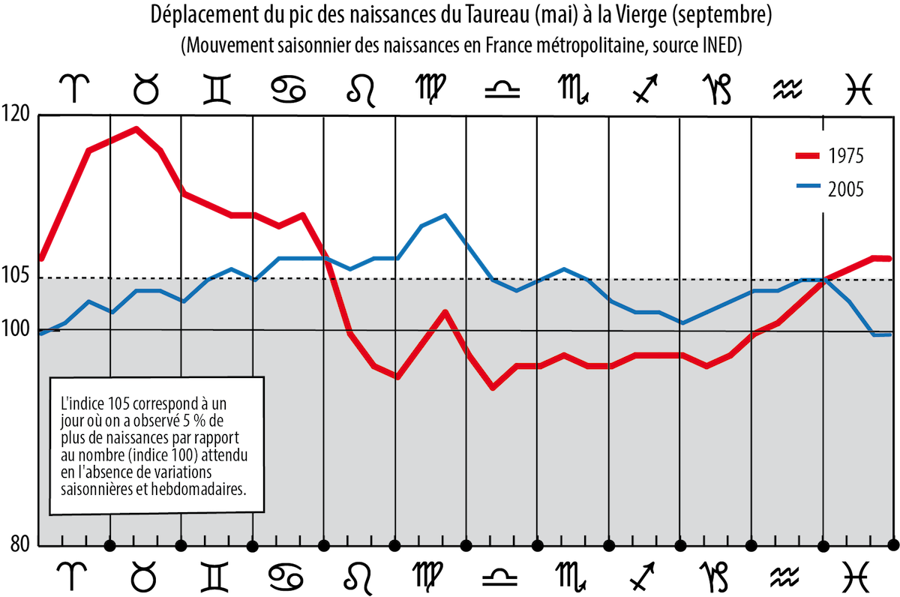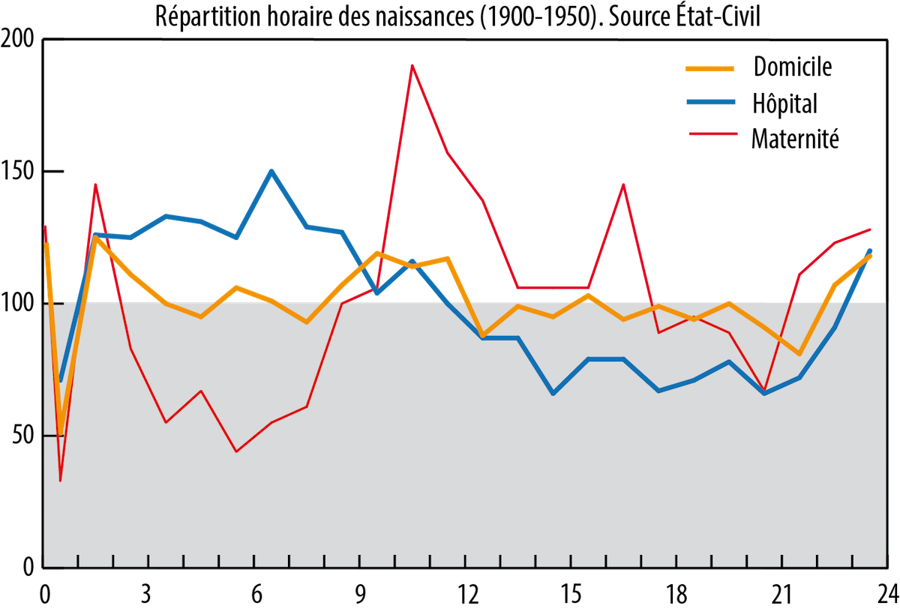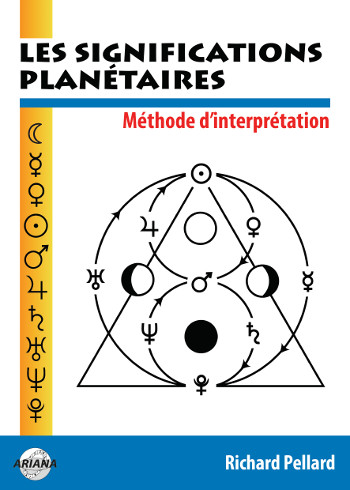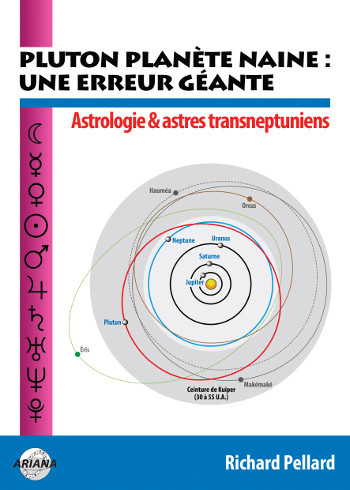Your Planets
Portraits of the Planets
Aspects between Planets
The planetary ages
The planetary families
Planets in Signs
The Planets in comics


Since the dawn of mankind, babies had become accustomed to being born at the time indicated by the invisible clocks of nature. Everything changed in 1810, when the Dr James, an American professor of obstetrics, induced the first medical delivery by artificial rupture of membranes. Subsequently, obstetrics continued to multiply the techniques: forceps, caesarean section, monitoring, etc. And yet, astrologers continue to calculate their Charts according to the exact date and time of childbirth, a moment more and more often decided by the obstetrician or by the mother and no longer by nature. Right or wrong?
Personal testimony: I knew a woman who had given birth to a daughter in the seventies. At the time, she only knew the basics of astrology (a few generalities about the Signs of the zodiac). For I no longer know what obscure reasons or nonsense, she did not want her baby to be born under the Sign of the Capricorn. The birth was naturally to take place on 20th January, when the Sun is at the very end of Capricorn. So she asked the obstetrician on duty to delay the delivery for a day (in fact, a few hours) so that her baby would be born when the Sun was at the very beginning of the Sign of the Sun Aquarius.
The operation was perfectly successful, and the Earth hosted a small “Capricorn” less and a little “Aquarius” moreover, to the great satisfaction of her very determined mother… who only learned much later, when she deepened her knowledge of astrology, that her daughter was very little influenced by Aquarius, where there was only the Sun, and enormously by the Sagittarius, occupied by a Venus-Mars-Jupiter-Neptune conjunction.
Not wanting a “Capricorn”, so she gave birth to a “Sagittarius” while she was hoping for a “Aquarius”. Deception on the goods? No: revenge for the complexity of astrological reality. The character of an individual cannot be reduced to or deduced from his Sun Sign alone. But at the time the mother had made this decision, she could not know it…
Since the purpose of this article is not to give a course in obstetrics, let us briefly summarize what the natural birth process consists of: after approximately 36 to 42 weeks of intrauterine life, the child-mother couple decides to separate physically. For a period that can last between a quarter of an hour and three days and in a crescendo of pain, the mother’s uterus then contracts more and more quickly and more intensely, until the moment when the baby is “forced out” (the newborns are all undocumented) and his mother “delivered”.
The umbilical cord is cut, and then comes the crucial moment for the baby to breathe independently. Whether you hang him suddenly by his feet (fortunately this is hardly done anymore) or gently place him on his mother’s belly, the experience of the first breath of oxygen in his expanding lungs is harsh. for the baby: it burns, it rasps, it scrapes… and then finally it passes and that’s it: the landing was successful. The astrologer can then establish the birth chart of the newborn.
What is the agent who “decided” of the time of birth when there is no medical intervention? 2500 years ago, for the great physician Hippocrates, this decision was made by the fetus itself: “when the time is right, the child stirs, ruptures the membranes that hold it and comes out of its mother’s womb.” This opinion was widely shared until the beginning of the 19th century, until rationalist and materialist science decided that “the uterus was an impregnable fortress, except for the sperm. The uterus was presented as a sort of mausoleum burying the fetus within it. There was no internal or external stimulation of any kind until at the end of nine months life arose.”

Fortunately, during the century and a half during which this naive and dogmatic scientistic belief reigned, wise mothers ignored it, knowing full well that by massaging their fetus through the skin of their womb and talking to it, they could calm him down. Then science studied intra-uterine life a little closer and a little more seriously, and fashion changed. In 1975, Professor Robert Debré did not hesitate to affirm in France-Soir that “it is the baby who orders the mother to expel him!”, thus giving reason to Hippocrates’ intuition.
“The baby in the womb lives in a warm, noisy and possibly pinkish world enveloped by the surrounding fluid… Multiple influences are active in this small world. The external environment—whether distant planets or the more immediate social, cultural, and physical world of the mother—plays a role, either directly or through the mother.” We now know that listening to Mozart calms it, for example, while Beethoven agitates it… For contemporary scientists, it is now accepted that it plays an important role in the onset of labor: when the brain of the fetus has reached a certain stage of maturity, it releases a substance which sets off a chain of reactions leading eventually to childbirth.
For official science—the very one which, in the 19th century, learnedly and wrongly asserted that the fetus was so well walled up in the uterus that it was not sensitive to any external or internal stimulation — the hypothesis of an astral influence at the moment of birth is a total heresy: no known physical law can account for it. How could the Sun, the Moon and the planets influence the chromosomal structure of the baby’s cells to give a decisive orientation to his psycho-physiological functioning, when he is born fully formed, heir to the genetic heritage of his parents?
For the moment, astrology has no answer to give. Astrologers can only note this fact without knowing the cause: at the moment of birth, there is interference between the baby’s hereditary baggage and subtle and mysterious solicitations from its cosmic environment, solicitations so strong that they allow us to foresee, from his first aspiration and with a very good margin of certainty, his dominant character traits.
Whatever the nature of this astral influence, the central problem remains: is it really the fetus that “choose” all alone his birth sky, which “decided” to be born at the rising of Mars rather than at that of Saturn? If so, any artificially induced labor would result in “distort” his relationship to the cosmos, thus giving birth to him under a sky he does not have “desired”, which is foreign to him… and his Astral chart could then give no indication of his personality.
That doesn’t seem to be the way things are going. For astrologers, there does not seem to be any difference between natural and artificial birth: according to their observations, one would be determined by the sky under which one is born, whether the hour of childbirth has been “decided” by the baby, the mother or the obstetrician. Which would mean that even if the baby would have “favorite” to be born at the time he had “chosen”, his nervous system nevertheless registers the state of the sky at the time of his birth. There is a deep mystery here, which is probably not close to being solved.
The time that serves as a reference for the Civil Registry as with astrologers is the one at which the baby operates its first autonomous breath, which marks the passage between two different fields of gravity: from the aquatic intra-uterine to the aerial extra-uterine. Until the 1950s, this time was often imprecise, rounded to the nearest quarter or half hour. Since then, it has been very accurate, which is important, since in certain borderline cases, a difference of twenty minutes (more or less) is enough for the baby’s chart to change significantly.

Take the example of a baby born on 18/09/1992 at 23:45 in Paris: at that time, Moon and Mars rise on the horizon, and are therefore both dominant. This child will therefore be both active, beating, realistic (Mars) and dreamy, receptive, concerned about his tranquility (Moon). If he had been born twenty minutes before, at 23:25, his astro-psychological profile would have been very different: this time, if the rising Moon was still in the power zone, Mars was no longer so…
The hypothesis of planetary heredity, according to which children would often be born with the same planetary dominants as their parents, was put forward, following important statistical work by a researcher in astrology, Michel Gauquelin. According to him, this “planetary heredity” would be much more obvious when the births are natural: in the event of artificially induced childbirth, there would be a significant discrepancy between the planetary positions in the parents and in the children. This researcher drew a conclusion: artificially induced births tend to make planetary heredity disappear. He could have drawn another: in fact, to carry out this statistical research, he compared two groups of families, those born before and after 1938. However, the birth times of the first group were most of the time rounded to a quarter hour or to the nearest half-hour (e.g., a person born at 9:30 or 9:45 was reported as born at 10:00), while the hours of the second group were much more precise.
The hypothesis of a planetary heredity was invalidated by later statistics from the same researcher.
Imagine a dialogue between a mother about to give birth and an obstetrician:
“What time will my baby be born if we let nature take its course? “In about two hours, madam.” The mother then telephones her astrologer, who tells her that if her child is born in two hours, at the rising of a Saturn-Pluto-Mars conjunction, he will have a cold, restless, inquisitive, combative temperament, oscillating between melancholy and activism.
“Oh no, said the mother-to-be, I don’t want him to be like that! “In this case, replies the astrologer, he must be born an hour later, at the time of the rising of a Moon-Venus-Jupiter conjunction, which will make him a being at the same time tender, affectionate, jovial and pragmatic, conciliatory and diplomatic. “That’s exactly the child I want!”, she exclaims. Then, turning to the obstetrician on duty: “Doctor, can you induce labor in three hours? “No problem, ma’am. It’s up to you…”
Sci-fi scenario? Probably not. It is even likely that such astro-induced births have already taken place. And after all, it is no more outrageous than the manipulations permitted by modern science. Aren’t we already talking about “parental project”, a gentle euphemism to designate the possibility offered by molecular genetics, capable of detecting a very large number of physical, behavioral and intellectual predispositions, of choosing “à la carte” the child you want or don’t. don’t want to have?
Already, in developed countries, and it is not the fault of astrologers, the medicalization of childbirth has resulted in a sharp increase in births to “office hours” (8–12 h, 14–18 h) and a very significant decrease at the weekend… In fact, we are born more often under certain skies than others…
Thanks to advances in genetics and obstetrics, it is now possible not only to choose the sex of your child, to know what diseases he is genetically predisposed to, but also to choose the sky under which he will be born, and therefore his astro-psychological predispositions. The wisest thing would be to let nature take its course… But has man ever been wise?
Text published in Astrologos No. 1, September 2000.

Les significations planétaires
par
620 pages. Illustrations en couleur.
La décision de ne traiter dans ce livre que des significations planétaires ne repose pas sur une sous-estimation du rôle des Signes du zodiaque et des Maisons. Le traditionnel trio Planètes-Zodiaque-Maisons est en effet l’expression d’une structure qui classe ces trois plans selon leur ordre de préséance et dans ce triptyque hiérarchisé, les Planètes occupent le premier rang.
La première partie de ce livre rassemble donc, sous une forme abondamment illustrée de schémas pédagogiques et tableaux explicatifs, une édition originale revue, augmentée et actualisée des textes consacrés aux significations planétaires telles qu’elles ont été définies par l’astrologie conditionaliste et une présentation détaillée des méthodes de hiérarchisation planétaire et d’interprétation accompagnées de nombreux exemples concrets illustrés par des Thèmes de célébrités.
La deuxième partie est consacrée, d’une part à une présentation critique des fondements traditionnels des significations planétaires, d’autre part à une présentation des rapports entre signaux et symboles, astrologie et psychologie. Enfin, la troisième partie présente brièvement les racines astrométriques des significations planétaires… et propose une voie de sortie de l’astrologie pour accéder à une plus vaste dimension noologique et spirituelle qui la prolonge et la contient.
Téléchargez-le dès maintenant dans notre boutique

Pluton planète naine : une erreur géante
par
117 pages. Illustrations en couleur.
Pluton ne fait plus partie des planètes majeures de notre système solaire : telle est la décision prise par une infime minorité d’astronomes lors de l’Assemblée Générale de l’Union Astronomique Internationale qui s’est tenue à Prague en août 2006. Elle est reléguée au rang de “planète naine”, au même titre que les nombreux astres découverts au-delà de son orbite.
Ce livre récapitule et analyse en détail le pourquoi et le comment de cette incroyable et irrationnelle décision contestée par de très nombreux astronomes de premier plan. Quelles sont les effets de cette “nanification” de Pluton sur son statut astrologique ? Faut-il remettre en question son influence et ses significations astro-psychologiques qui semblaient avérées depuis sa découverte en 1930 ? Les “plutoniens” ont-ils cessé d’exister depuis cette décision charlatanesque ? Ce livre pose également le problème des astres transplutoniens nouvellement découverts. Quel statut astrologique et quelles influences et significations précises leur accorder ?
Enfin, cet ouvrage propose une vision unitaire du système solaire qui démontre, chiffes et arguments rationnels à l’appui, que Pluton en est toujours un élément essentiel, ce qui est loin d’être le cas pour les autres astres au-delà de son orbite. Après avoir lu ce livre, vous saurez quoi répondre à ceux qui pensent avoir trouvé, avec l’exclusion de Pluton du cortège planétaire traditionnel, un nouvel argument contre l’astrologie !
Téléchargez-le dès maintenant dans notre boutique